Having just enjoyed a fantastic month-long holiday in newly reopened, post-coronapanic Japan, I now had to face the reality of a homeward journey into the world of same-old, same-old. Then again, given that I’d booked a flight on the Japanese flag carrier, there was the small consolation that the high standards of service I’d experienced on the ground would be extended for a few more precious hours in the air.
Welcome aboard Japan Airlines flight JL 745.
Note: The information set out here pertains only to the specific flight reviewed. Cabin equipment, amenities, meal options and other details may be different on previous or future flights, even if operated by the same airline on the same route and/or under the same flight number.
For the sake of brevity, IATA airline and airport codes have been used throughout this report in place of full names (e.g., “JL” instead of “Japan Airlines”; “NRT” instead of “Narita International Airport”).
This review covers the second, homebound leg (NRT-MNL) of a round-trip MNL-NRT-MNL journey. Click here to read my review of the first, outbound leg (MNL-NRT).
ROUTE MAP
OVERVIEW
Note: All times are local. There is a 1-hour time difference between Tōkyō-Narita (GMT+9) and Manila (GMT+8).
Flight details
Airline and flight number : Japan Airlines (JL) 745
Route : Tōkyō-Narita, Japan (IATA code: NRT) to Manila, Philippines (IATA code: MNL)
Route type : International
Date : Wednesday, 07 December 2022
Scheduled departure time (NRT) : 18:05
Actual departure time (NRT) : 18:14 (from gate) / 18:39 (take-off)
Scheduled arrival time (MNL) : 22:10
Actual arrival time (MNL) : 22:02 (landing) / 22:09 (at gate)
Actual time in the air (take-off to landing) : 4 hours 23 minutes
Equipment and cabin
Aircraft : Boeing 787-8 Dreamliner
Manufacturer : Boeing
Registration number : JA830J
Passenger capacity : 30 Business, 176 Economy (206 total)
Travel class flown : Economy Class
Here’s JA830J, parked on the apron next to Gate 95 at NRT Terminal 2’s satellite concourse.
Delivered in May 2013, the Boeing 787-8 Dreamliner was less than a decade old when I boarded it for flight JL 745. Despite its relatively young age, JA830J wasn’t fitted with JL’s current-generation “Sky Suite” (Business) and “Sky Wider” (Economy) seat equipment. As we’ll see later, the cabins were kitted out with what might be described as inferior hardware, albeit acceptable for a regional route such as this one.
Pandemic-related measures
As of this writing (18 December 2022), JL policy requires passengers to wear a face mask throughout the flight, except whilst eating or drinking. Limited exceptions apply. The exact wording as set out on their official website is as follows:
Passengers are required to wear a face mask.
Exceptions may be made for infants under 2 years of age and passengers who have medical conditions that would be complicated by wearing a mask.
BAGGAGE
For complete details on JL’s baggage rules, please refer to their official website.
AT THE AIRPORT
Origin
JL flights out of the Greater Tōkyō area – except those using Haneda Airport – are based at Terminal 2 (T2) of Narita International Airport (IATA code: NRT).
You can learn more about my experience of using NRT T2 in this separate Terminal Report.
Check-in
JL’s check-in facilities keep different hours at different airports, either tied to specific flight schedules or operating continuously from a stated time. (Full details are available on their official website, along with information on T2’s general layout.) At NRT, the JL counters are open from 7:00 in the morning.
Since NRT T2 is JL’s primary base of operations for international routes, the airline maintains a semi-fixed presence across several sets of check-in counters. Unlike at other airports where a JL flight might be randomly assigned certain counters on an as-needed basis, at NRT entire JL-exclusive rows would be devoted to different classes of travel or high-tier loyalty programme members. Any passenger can check in for their flight at the row corresponding to their fare class or membership tier, regardless of destination.
On the day of my flight, I was directed by airport staff to join the snaking queue for the Economy Class counters (grouped along row P at the time). I was bound for the Philippines, but most of the people around me seemed to be heading for Singapore – not that it mattered as anyone travelling on JL Economy could use these counters wherever they were flying to.
The check-in process was mostly routine, with the usual inspection of travel documents and weigh-in of luggage. An additional destination-specific step involved me showing a QR code to prove that I’d already registered on the Philippine government’s eTravel portal (more about that here).
With that sorted, I went up to the airport mall in search of a bite to eat. Many restaurants had closed down due to the pandemic – some permanently, some temporarily – and those that were open were doing a roaring trade. In the end, I managed to squeeze myself into a McDonalds for a quick lunch of burger and fries.
Security and immigration were essentially the same as in pre-pandemic days. In case you’ve not been through NRT for some years, I might add that even before the borders closed in 2020, it was becoming standard practice for outgoing passengers to be funnelled through unmanned e-gates, where passports and boarding passes were scanned but not physically stamped. This was also the case on my present voyage; i.e., I was directed to use an e-gate and all exit formalities were completed electronically.
Boarding
My flight’s assigned berth was Gate 95, located all the way in T2’s isolated satellite concourse.
The main building and the satellite are linked by a long, fully enclosed pier. Up until 2013, the pier housed tracks for an automated people mover system, but that has since been decommissioned and replaced with moving walkways (where arrivals and departures are separated by glass walls).
And here were are at the gate. Unlike at MNL (ahead of my outbound flight JL 746), there was no cordoned-off enclosure around the holding area and no secondary hand luggage check was conducted.
Boarding was conducted group by group, according to the number printed on each boarding pass. The pre-determined sequence was strictly adhered to with passengers out of their assigned turn asked to step aside. From what I observed, the priority order used at NRT was essentially identical to the one used at MNL, which was as follows (note: the image below is that of a sign used at MNL for my previous flight, JL 746):
Gate 95 was fitted with a double aerobridge, but only the aft jetway was deployed and connected to our waiting aircraft.


ONBOARD EXPERIENCE
Cabin interior and seating
Three different cabin configurations are employed on JL’s Boeing 787-8 Dreamliners. Amongst the three, two are used on aircraft plying international routes.
One of the two layouts features JL’s flagship seats: the “JAL Sky Suite” for Business Class and “JAL Sky Wider” for Economy Class. I experienced the Sky Wider seat on my previous JL flight (JL 746 from MNL to NRT) and I can attest that it was the best, most comfortable, and most spacious Economy Class hardware I’d ever flown in.
Alas, our present aircraft was fitted with the other layout.
Instead of lounging in semi-private Sky Suites, the Business Class passengers on this particular iteration of JL 745 were stuck with the airline’s regional “JAL Shell Flat Neo” product. (Note: these two pictures were taken during disembarkation at MNL – after arrival – which explains the unkempt state of the cabin.)

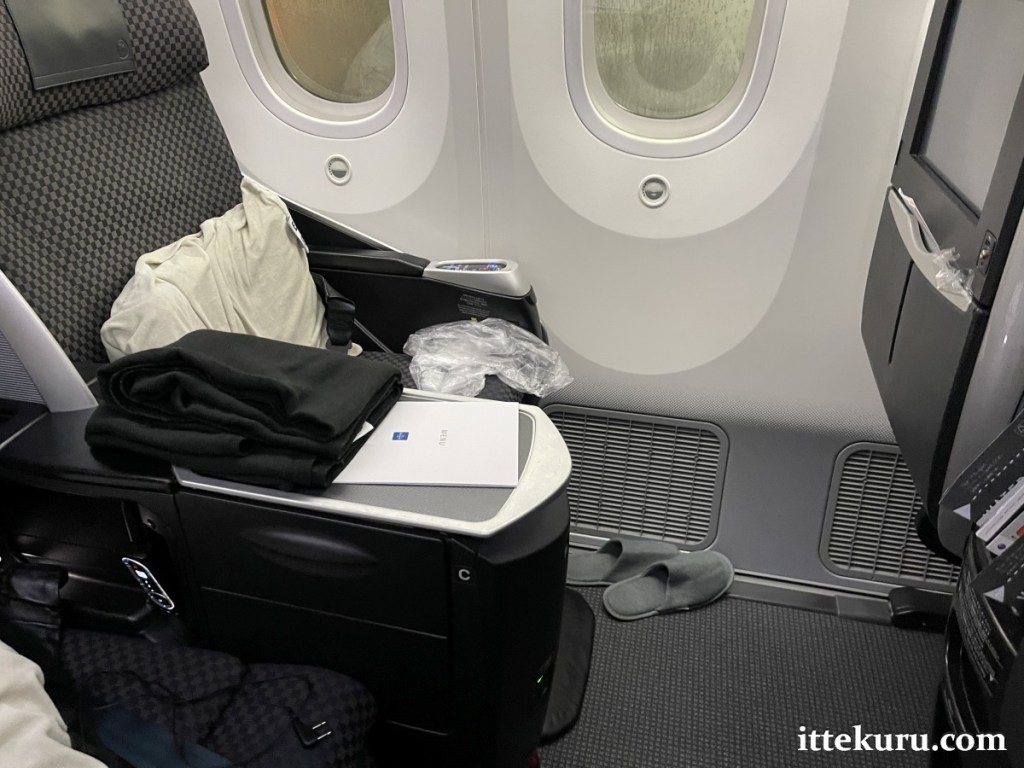
Further aft in Economy Class, I found myself in a basic product that didn’t even merit a marketing-orientated label. These were simply described on the JL website as “JAL Economy Class Seat“.
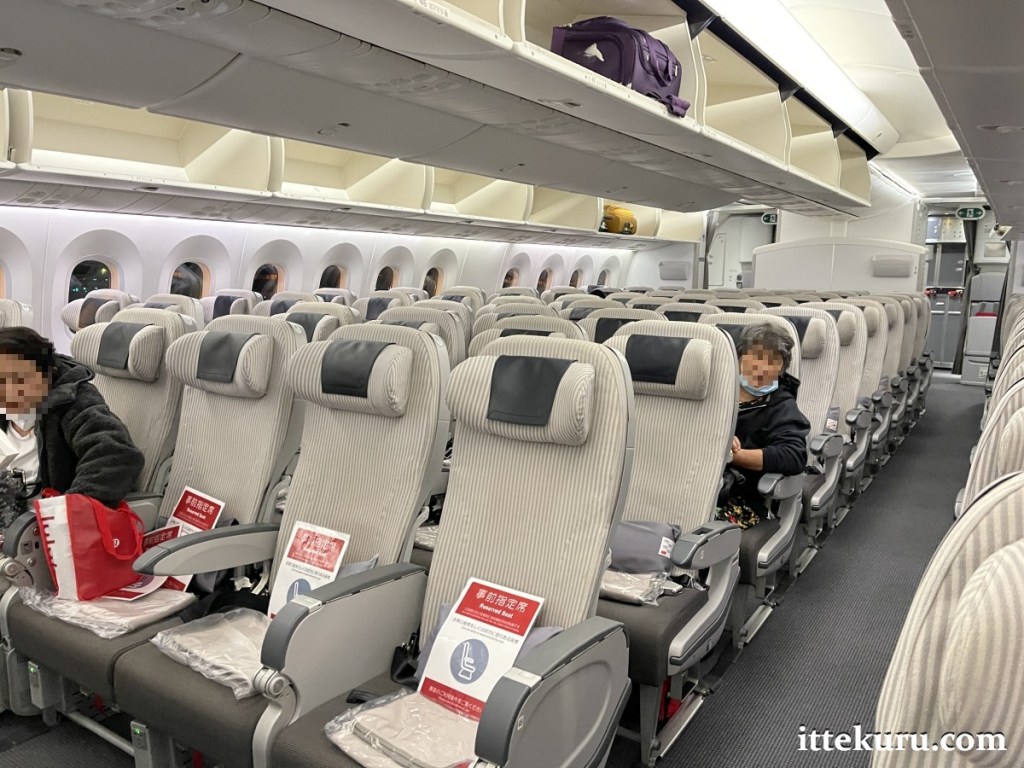


To be scrupulously fair, my seat was quite comfortable and more than adequately equipped with amenities, especially for a short regional flight such as JL 745. I also appreciated the fact that in this 2-4-2 cabin configuration, there was just one seat between my window-side perch and the aisle, meaning that I only had to disturb one fellow passenger’s peace (as opposed to the usual two) if I ever needed to use the lavatory mid-flight.
And here’s the best part. On this particular flight, the seat next to mine was empty. An introverted traveller’s dream.
These seats were fitted with fold-down footrests, which seemed great in theory but didn’t really offer much comfort (I kept mine stowed away for most of the journey). The legroom was quite generous, though with a caveat: my footwell was partly occupied by an aircraft instrument box which made it difficult to assume a fully relaxed position.
Note to future self: avoid seat 54A the next time you fly on a JL Dreamliner of this configuration.
Let’s have a look at the seat back.
I see they’ve fitted a coat hook. My number-one requirement has been satisfactorily met.
There were fewer storage options for personal bits-and-bobs here than on the Sky Wider seat of my previous flight, but I still appreciated the extra net pockets for my mobile phone and other small items.
As for the tray table…
…the surface was of a single-panel design (instead of the space-saving bi-fold table fitted on Sky Wider seats).
Let’s have a look at the ceiling panel.
Adjustable air vents? I approve. And with no-one next to me to question my choices in life, I made sure to twist both vents into their maximum-strength, fully open positions.
When the Dreamliner was first introduced more than a decade ago, I was just as excited as many others to see the cutting-edge “smart glass” window panes which smoothly transition from transparent to dark at the touch of a button.
In practice…mm, not so impressive. I suppose I’d rather have traditional pull-down window shades after all.
Now for the customary wide shot of the cabin.
Right, that’s the hardware taken care of. Time to examine the soft product.
In-flight service and amenities
Let’s go through the sequence of service as rendered during the flight.
At boarding time, I found a pillow and plastic-wrapped blanket already laid out on my seat.
The seat pockets contained a wrapped set of headphones and the usual assortment of onboard literature. (And an air sickness bag, of course.)
About 25 minutes after take-off, the cabin crew distributed blank immigration and customs forms for use at MNL border control. From what I observed, Philippine passport holders were only given customs cards whilst foreign passport holders received both.
10 minutes or so later, passengers were offered hot oshibori (moist hand towels).
The same amenity was supplied on my previous flight (JL 746), so this appears to be a standard feature in JL Economy. A nice touch, and not something I’m accustomed to seeing outside of Business Class.
Meal service began roughly twenty minutes after that point, but we’ll save the details for the next section.
Catering
Now then, time for my favourite part of the onboard experience: the in-flight meal. 🙂
It’s always a delight when a fully laden cart pulls up next to one’s row.
This being peasant class, there were no fancy foil-lettered menu booklets waiting at my seat when I boarded. But a quick trawl-through of the JL website did reveal the following Economy menu for the NRT-MNL route (December 2022 version).
お食事
[食プロデューサー狐野扶実子氏と料理人コンペティション「RED
U-35」歴代ファイナリスト6 名で作り上げた監修メニューです。]【12/1-15】
ハンバーグ 竹炭入り照り焼きソースと十六穀ごはん
(野田シェフ)
※ハンバーグには牛・豚の合挽肉を使用しております【12/16-30】
スパイス香る チキンオーバーライス
(小川シェフ)オレンジキャロットラペ
グリーンパスタサラダ
とうもろこしのパンナコッタ風
フレッシュサラダ ドレッシング添え
ハーゲンダッツ アイスクリーム
コーヒー、紅茶、緑茶Menu
[Enjoy JAL’s inflight menu by food producer Ms. KONO
Fumiko and the 6 Finalists of RED U-35.]【12/1-15】
Hamburger Steak with Bamboo Charcoal Teriyaki Sauce
& 16 Grain Rice
Note: Ground Beef & Pork Blend Hamburger Steak.【12/16-30】
Chicken Over Rice with a scent of SpiceOrange Carottes Râpées
Green Pasta Salad
Corn Panna Cotta Style
Fresh Salad with Dressing
Häagen-Dazs Ice Cream
Coffee / Tea / Green Tea
Now for a look at the beverage menu.
| アルコールドリンク Alcoholic Drink | ノンアルコールドリンク Non-alcoholic Drink |
| ワイン(赤/白) Wine (Red/White) ビール Beer 日本酒 Japanese Sake ウィスキー Whisky ジン Gin ウォッカ Vodka ブランディー Brandy 梅酒 Plum Wine | JAL オリジナルドリンク “スカイタイム ももとぶどう” JAL Original Drink “SKY TIME Peach & Grape MIX” オレンジジュース Orange Juice アップルジュース Apple Juice トマトジュース Tomato Juice コカ・コーラ Coca-Cola スプライト Sprite 冷緑茶 “綾鷹(あやたか)” Cold Green Tea スパークリングウォーター Sparkling Water ミネラルウォーター Still Mineral Water コーヒー Coffee カフェインレスコーヒー Decaffeinated Coffee 紅茶 Tea 緑茶 Green Tea |
You’ll observe that apart from beverages, no alternative options were offered on JL’s Economy Class menu. Just one main course – differing between the first and second halves of the month – and a fixed set of side dishes. Of course, the needs of passengers with specific dietary requirements can be catered for, but this is something you’ll have to arrange at the point of booking or otherwise before the flight. Once on board, it’s “take it or leave it”.
As it happened, I had no objection to any of the items on offer so I was happy to accept the tray as-is. (If the main course had been seafood-based though…ouch. This fish-hating, crustacean-allergic chap would have gone hungry.)
So, here’s dinner as originally served…
…and with the covers off. I’m not particularly fond of alcohol, but I felt like adding a little touch of posh to dinner and requested a bottle of red wine.
Delicious, every last grain and crumb and chunk of it. I suppose the weakest items on the tray were the salad (but that’s mainly because I don’t like leafy salads to begin with) and the panna cotta (bit weak on flavour and texture), and even then I was happy enough to finish those off.
Now for dessert.
The ice cream did seem over-frozen when initially served, but that was likely deliberate as it had softened perfectly by the time I’d finished the rest of the meal.
Towards the end of service, the cabin crew went around offering tea and coffee. I chose to partake of neither but appreciated being given the option.
In-flight entertainment and internet access
Every Economy Class seat was fitted with a personal monitor. The IFE system could be controlled either directly on the screen (via the touch interface) or using a remote control unit tethered to the armrest.


The supplied headphone set wasn’t noise-cancelling, but that’s just par for the course in Economy Class.
There was a foldout card in my seat pocket describing the onboard WiFi service (with detailed connection instructions printed inside). The following image was taken on another flight, although the information sheet on the present flight appeared to be identical to this one.
I didn’t try the service myself – hardly a worthwhile investment for a relatively short flight – but it’s there if you need it.
ARRIVING IN THE PHILIPPINES
Most of the Philippine government’s pandemic-era entry controls have been scaled back, although things haven’t quite returned to normal. You can learn more about the process in my Airport Guide for the arrivals facilities at MNL T1 (which JL normally uses for its Manila services).
OVERALL IMPRESSION
My assessment of this flight is broadly on par with that of my preceding JL experience, so I’ll simply quote the conclusion I wrote for the previous review (minus a couple of lines describing the seats, which were markedly different):
JL was the airline I flew with on my very first trip to Japan, back in the spring of 2009. I didn’t know it then, but that first journey to this strange and exotic corner of the world would spark a lifelong obsession, a deep and abiding interest in its history and culture and…well, if I had to be specific, its trains and castles. It was also the start of an annual travel tradition (now at 21 visits and counting) that would be interrupted only by the deepest darkest years of the pandemic. It’s quite fitting that I’ve now chosen to fly again with the first carrier to take me to a place I now regard as a second home, a happy escape from the toils and dreariness of life back home.
Sentiments aside, I really was quite pleased with JL’s performance on this flight. Having just one person between my window seat and the aisle (as opposed to the usual two) left me feeling less trapped than usual, on top of simply making it easier to squeeze through for a lavatory break. The food was excellent – despite the lack of choice for the mains – and the in-flight entertainment was more than adequate for a 4-hour regional hop.
Granted, JL isn’t the most cost-effective option on the busy, highly competitive MNL-NRT route. Indeed, this was the main reason why I didn’t use them again for so long after that first journey in 2009. With multiple airlines to choose from – including several budget carriers – JL simply tended to price itself out of the running whenever I made arrangements for holidays in Japan. I’m glad I gave in to the urge to, shall we say, splash out a little for this long-awaited return trip (without spending a fortune on Business or First Class of course), because I saw for myself that where Japan Airlines is concerned…
…one does tend to get what one pays for. With a little extra on top.
Drawing from my experience on both legs of this round-trip journey, I’ll be sure to keep JL amongst my preferred options for flights to Japan. I may still find myself gravitating towards less costly alternatives on most occasions, but whenever I feel like treating myself to better conditions in the air, I shall very likely think of them first.
Cheerio.





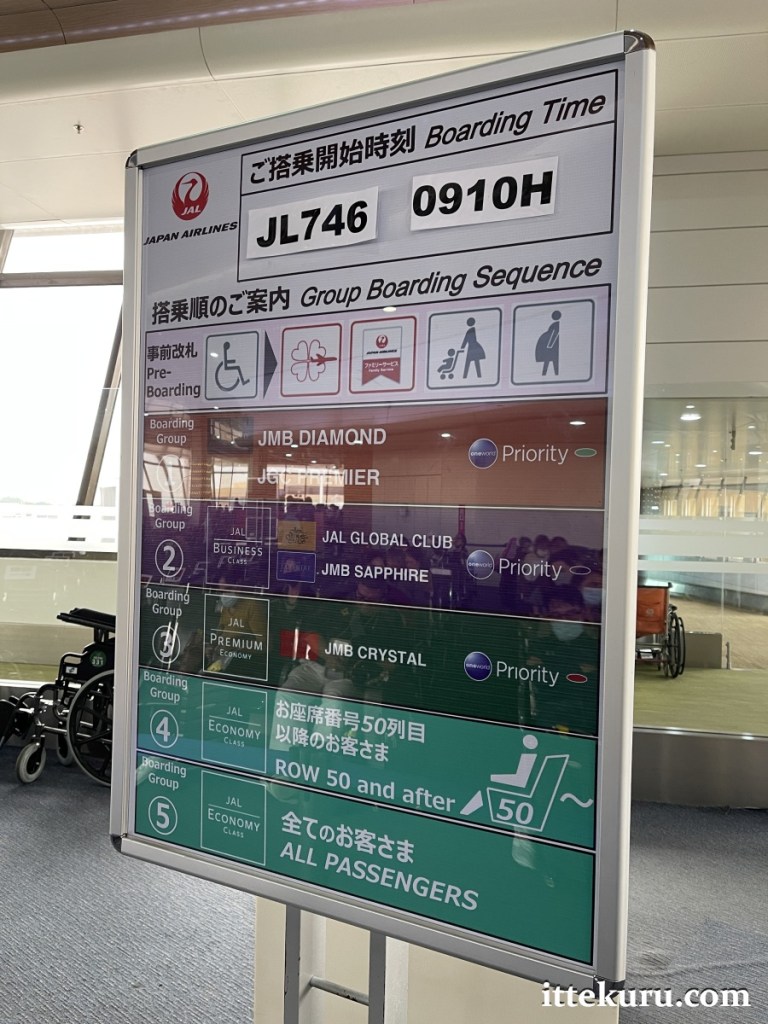




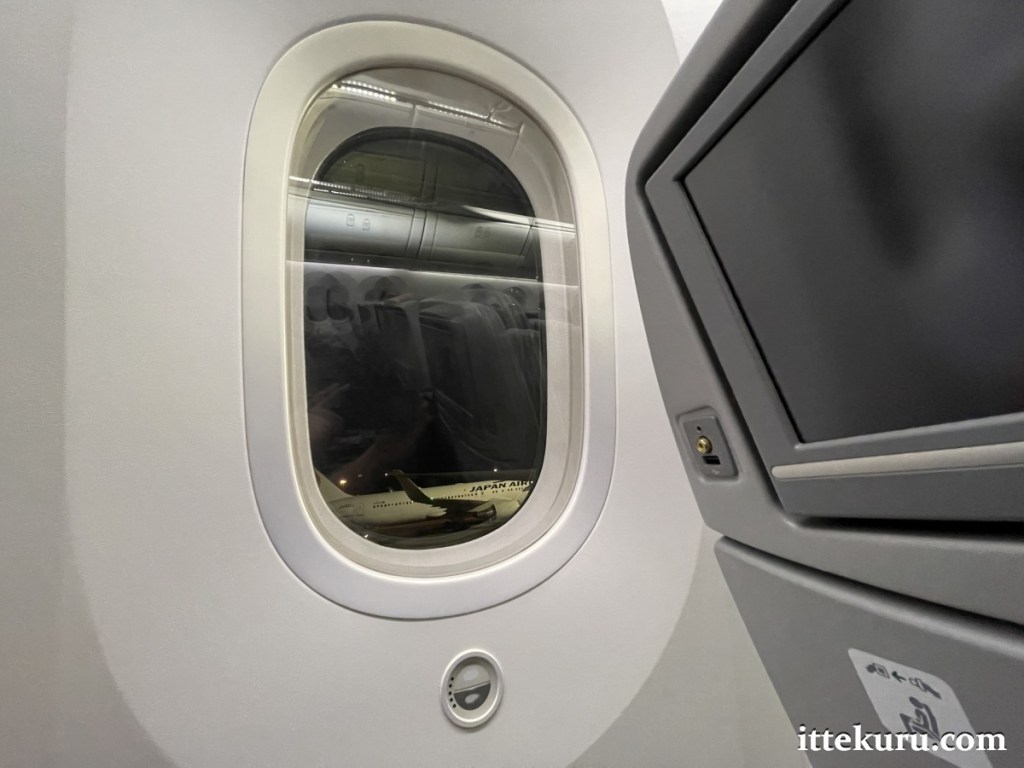


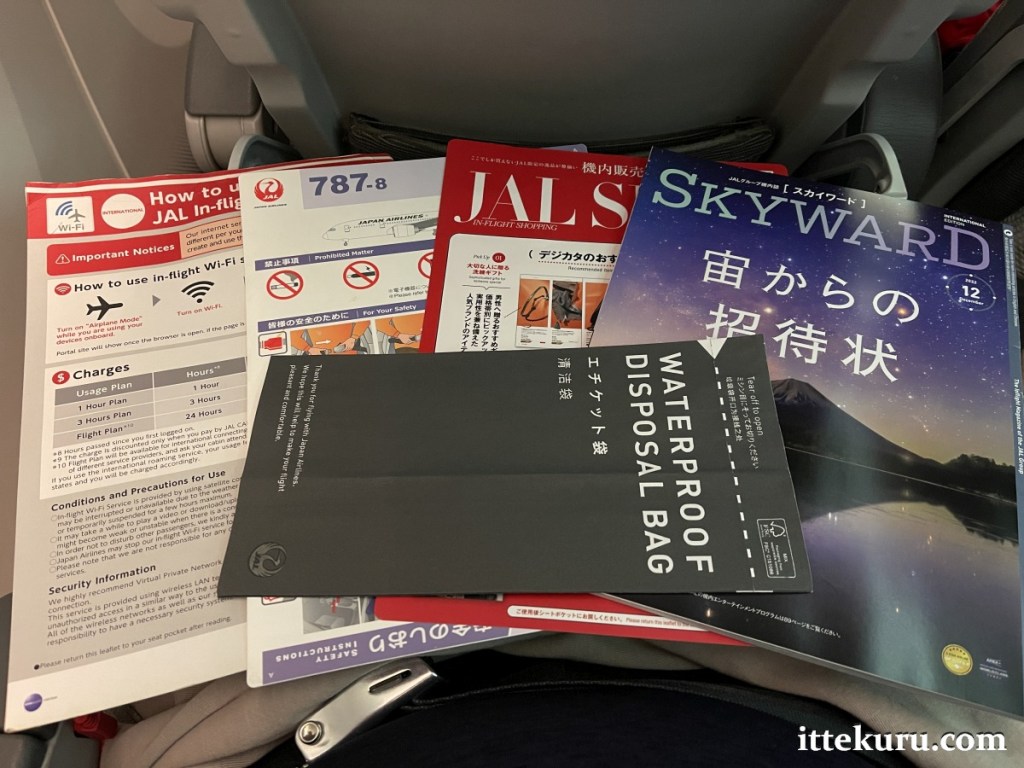




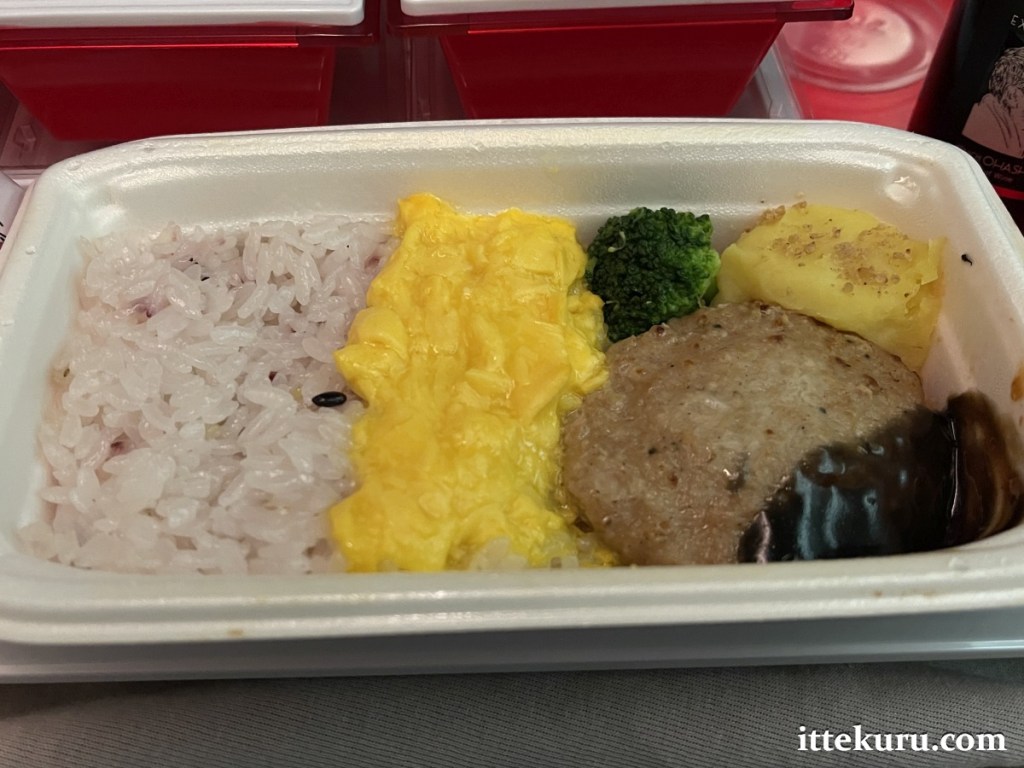



Pingback: Flight Report: MNL-NRT on Japan Airlines Flight JL 746 (08 November 2022) | Within striking distance·